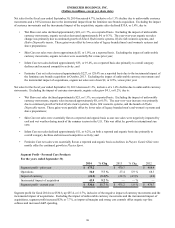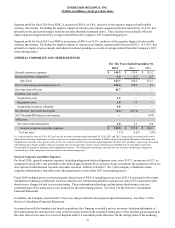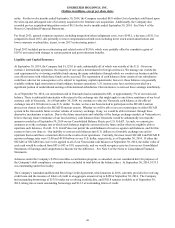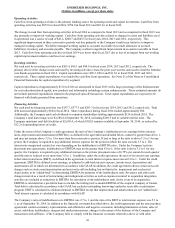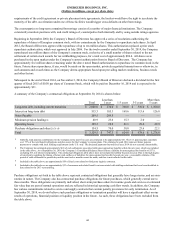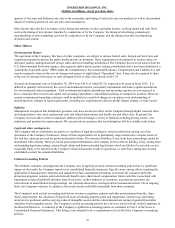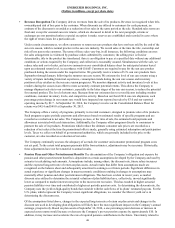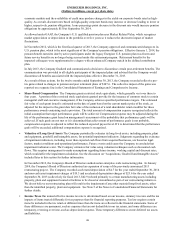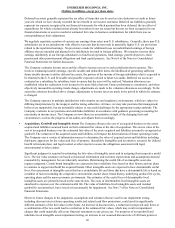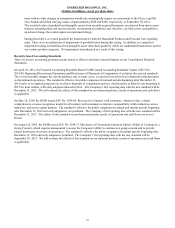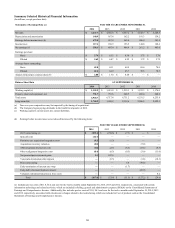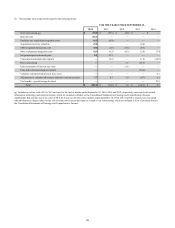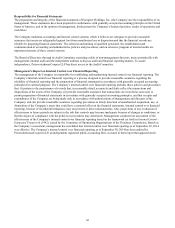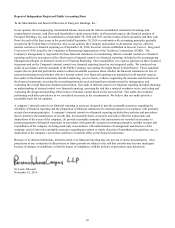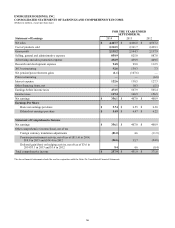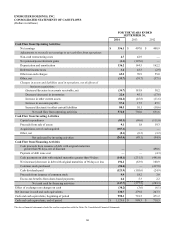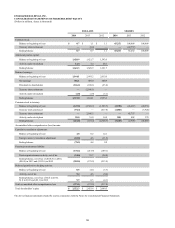Energizer 2014 Annual Report Download - page 53
Download and view the complete annual report
Please find page 53 of the 2014 Energizer annual report below. You can navigate through the pages in the report by either clicking on the pages listed below, or by using the keyword search tool below to find specific information within the annual report.
ENERGIZER HOLDINGS, INC.
(Dollars in millions, except per share data)
economic markets and the availability of credit may produce changes in the yields on corporate bonds rated as high-
quality. As a result, discount rates based on high-quality corporate bonds may increase or decrease leading to lower or
higher, respectively, pension obligations. A one percentage point decrease in the discount rate would increase pension
obligations by approximately $150 at September 30, 2014.
As allowed under GAAP, the Company’s U.S. qualified pension plan uses Market Related Value, which recognizes
market appreciation or depreciation in the portfolio over five years so it reduces the short-term impact of market
fluctuations.
In November 2012, which is the first fiscal quarter of 2013, the Company approved and communicated changes to its
U.S. pension plan, which is the most significant of the Company's pension obligations. Effective January 1, 2014, the
pension benefit earned to date by active participants under the legacy Energizer U.S. pension plan was frozen and
future service benefits are no longer being accrued under this retirement program. Retirement benefits for the
impacted colleagues were supplemented to a degree with an enhanced Company match in the defined contribution
plan.
In July 2013, the Company finalized and communicated a decision to discontinue certain post-retirement benefits. The
communication was provided to all eligible participants of the impacted plans and advised that the Company would
discontinue all benefits associated with the impacted plans effective December 31, 2013.
As a result of these actions, for the twelve months ended September 30, 2013, the Company recorded collective pre-
tax gains related to changes in pension and post retirement plans of $107.6. The collective impact of the gains was
reported on a separate line in the Consolidated Statements of Earnings and Comprehensive Income.
• Share-Based Compensation The Company grants restricted stock equivalents, which generally vest over three to
four years. A portion of the restricted stock equivalents granted provide for the issuance of common stock to certain
managerial staff and executive management, if the Company achieves specified performance targets. The estimated
fair value of each grant issued is estimated on the date of grant based on the current market price of the stock, as
adjusted for the impact to the grant date fair value of the inclusion of a total shareholder return modifier for those
performance awards containing such a provision. The total amount of compensation expense recognized reflects the
initial assumption that target performance goals will be achieved. Compensation expense may be adjusted during the
life of the performance grant based on management’s assessment of the probability that performance goals will be
achieved. If such goals are not met or it is determined that achievement of performance goals is not probable,
compensation expense is adjusted to reflect the reduced expected payout level. If it is determined that the performance
goals will be exceeded, additional compensation expense is recognized.
• Valuation of Long-Lived Assets The Company periodically evaluates its long-lived assets, including property, plant
and equipment, goodwill and intangible assets, for potential impairment indicators. Judgments regarding the existence
of impairment indicators, including lower than expected cash flows from acquired businesses, are based on legal
factors, market conditions and operational performance. Future events could cause the Company to conclude that
impairment indicators exist. The Company estimates fair value using valuation techniques such as discounted cash
flows. This requires management to make assumptions regarding future income, working capital and discount rates,
which would affect the impairment calculation. See the discussion on “Acquisitions, Goodwill and Intangible Assets”
included later in this section for further information.
In November 2012, the Company's Board of Directors authorized an enterprise-wide restructuring plan. In January
2014, the Company's Board of Directors authorized an expansion of scope of the previously announced 2013
restructuring project. The Company recorded accelerated depreciation of $4.7 for the year ended September 30, 2014
and non-cash asset impairment charges of $19.3 and accelerated depreciation charges of $23.6 for the year ended
September 30, 2013 (collectively for fiscal 2013, $42.9) related primarily to certain manufacturing assets including
property, plant and equipment located at facilities to be closed or streamlined as part of our restructuring initiatives.
We do not believe our restructuring plan will result in the impairment of any other material long-lived assets, other
than the identified property, plant and equipment. See Note 5 of the Notes to Consolidated Financial Statements for
further details.
• Income Taxes Our annual effective income tax rate is determined based on our income, statutory tax rates and the tax
impacts of items treated differently for tax purposes than for financial reporting purposes. Tax law requires certain
items be included in the tax return at different times than the items are reflected in the financial statements. Some of
these differences are permanent, such as expenses that are not deductible in our tax return, and some differences are
temporary, reversing over time, such as depreciation expense. These temporary differences create deferred tax assets
and liabilities.
49


